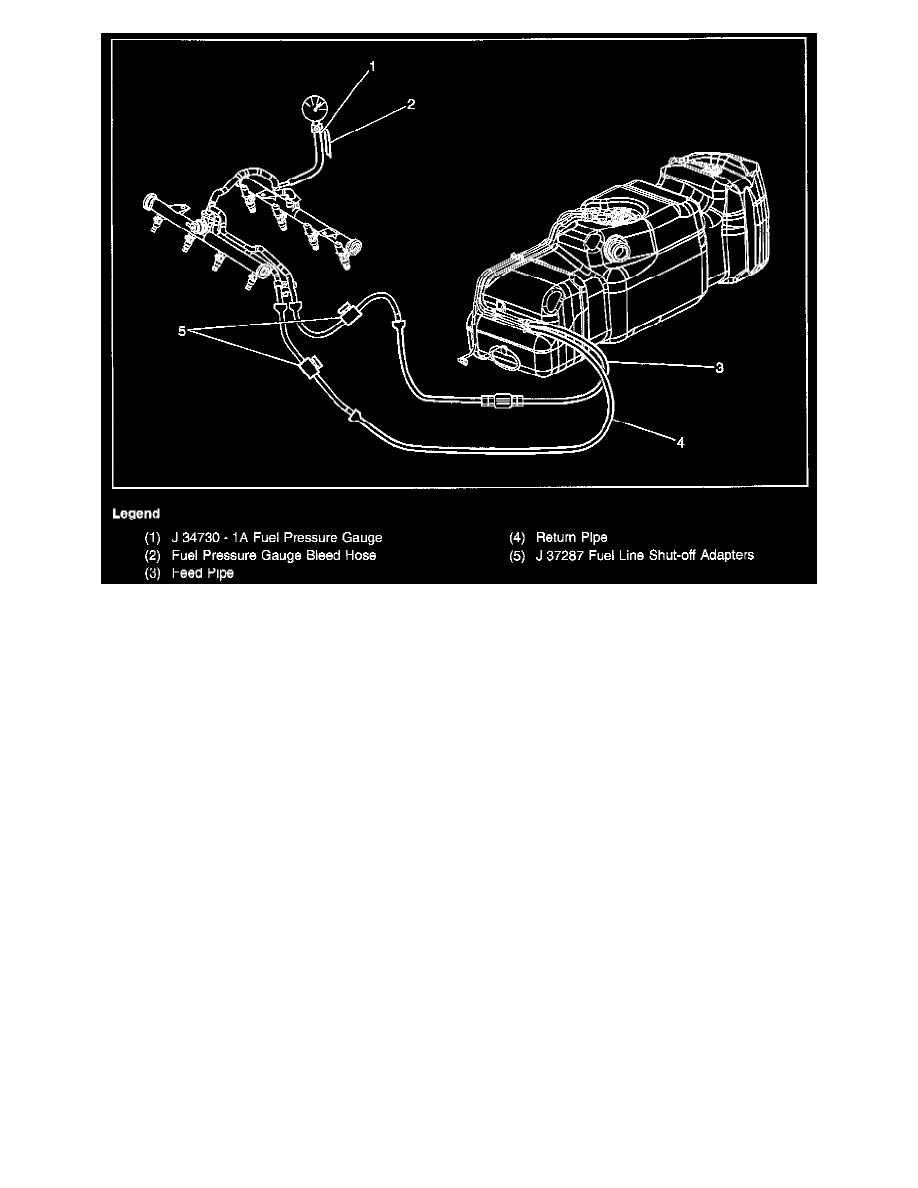C 1500 Truck 2WD V8-5.3L VIN T (1999)

Circuit Description
When you turn ON the ignition switch, the Powertrain Control Module (PCM) turns ON the in-tank fuel pump. The in-tank fuel pump remains ON as
long as the engine is cranking or running and the PCM receives reference pulses. If there are no reference pulses, the PCM turns the in-tank fuel pump
OFF 2 seconds after the ignition switch is turned ON or 2 seconds after the engine stops running.
The electric fuel pump attaches to the fuel sender assembly inside the fuel tank. The in-tank fuel pump supplies fuel through an in-pipe fuel filter to the
fuel rail assembly. The fuel pump provides fuel at a pressure above the pressure needed by the fuel injectors. A fuel pressure regulator, attached to the
fuel rail, keeps the fuel available to the fuel injectors at a regulated pressure. Unused fuel returns to the fuel tank by a separate fuel return pipe.
Test Description
The numbers below refer to the step numbers on the diagnostic table.
2. When the ignition switch is ON and the fuel pump is running, the fuel pressure indicated by the fuel pressure gauge should read 379-427 kPa
(55-62 psi). The spring pressure inside the fuel pressure regulator controls the fuel pressure.
3. A fuel system that drops more than 34 kPa (5 psi) in 10 minutes has a leak in one or more of the following areas:
^
The fuel pump check valve.
^
The fuel pump flex pipe.
^
The valve or valve seat within the fuel pressure regulator.
^
The fuel injector(s).
4. A fuel system that drops more than 14 kPa (2 psi) in 10 minutes after being relieved to 69 kPa (10 psi) indicates a leaking fuel pump check valve.
5. Fuel pressure that drops-off during acceleration, cruise or hard cornering may cause a lean condition. A lean condition can cause a loss of power,
surging, or misfire. You can diagnose a lean condition using a scan tool. If an extremely lean condition occurs, the heated oxygen sensors(s) will
stop toggling. The heated oxygen sensor output voltage(s) will drop below 300 mV. The fuel injector pulse width will increase.
Important: Make sure the fuel system is not operating in the Fuel Cut-Off Mode. This can cause false indications by the scan tool.
8. When the engine is at idle, the manifold pressure is low (high vacuum). This low pressure (high vacuum) is applied to the fuel pressure regulator
diaphragm. The low pressure (high vacuum) will onset the pressure being applied to the fuel pressure regulator diaphragm by the spring inside the
fuel pressure regulator. When this happens, the result is lower fuel pressure. The fuel pressure at idle will vary slightly as the barometric pressure
changes, but the fuel pressure at idle should always be less than the fuel pressure noted in step 2 with the engine OFF.
12. A rich condition may result from the fuel pressure being above 427 kPa (62 psi). A rich condition may cause DTC P0132, DTC P0152, DTC
P0172 or DTC P0175 to set. Driveability conditions associated with rich conditions can include hard starting followed by black smoke and a
strong sulfur smell in the exhaust.
